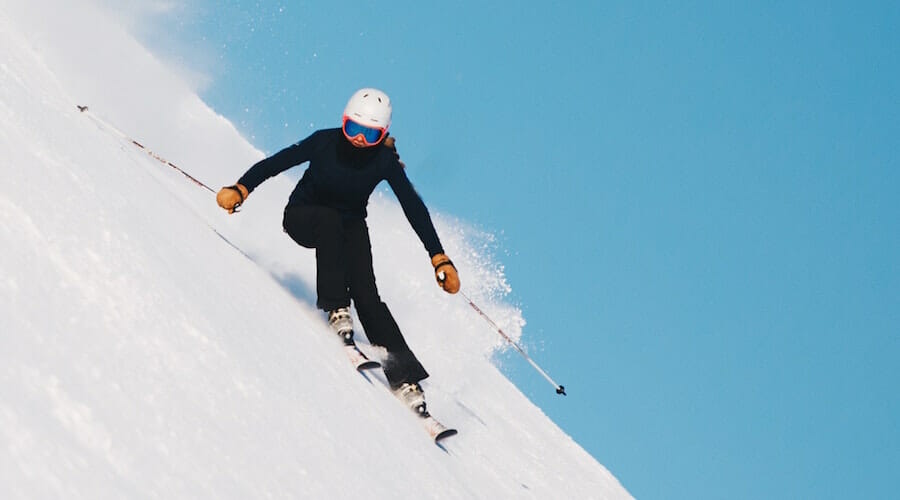
Winter in Greater Vancouver is lot different than it is for the rest of the province and country. Our moderate climate allows for a wide variety of outdoor sports and fitness activities through the December 21 solstice and beyond. Then there are the actual winter sports themselves, higher elevation activities that include snowboarding, skiing, and Yukigassen (yes, professional snowball fighting).
When you consider the fact that our region has such bountiful access to fun and fit-centric winter sports and activities, there’s no wonder that the risk of injury is inflated at this otherwise wondrous time of the year. In order to prepare you for the season, we’ve compiled a list of common winter sports injuries so that you can take the necessary precautions in the weeks/months to come.
5 Common Bumps, Bruises, Sprains and Pains You Need to Watch Out For When Playing Winter Sports
1. Concussions
Typical winter sports involve time on snow and ice, a slippery high-velocity surface that can have your skates, board, or skies come up from under you. It’s important to note that the level of risk directly varies by winter sport of choice. For instance, studies show that the rates of head (and neck) injuries among skiers and snowboarders vary between 0.09 – 0.46 per 1000 outings, with snowboarders having a 50% higher rate of head injury when compared to skiers. While every winter sport participant should wear headgear explicitly appropriate to the activity and environment (mountain gradient) snowboarders will want to be particularly mindful on the slopes. Get into the habit of using your arms to protect your head on falls. It’s better to suffer a fractured flipper than skull.
If you have recently sustained a concussion after participating in any of the above, be sure to seek the services of a physiotherapist with experience in working with individuals with post-concussion symptoms and vestibular conditions.
2. Spine / Back Injuries
We suppose this can be said about outdoor activities during any time of the year, but without a doubt the risk increases with winter sports. This is especially the case for more extreme enthusiasts who snowboard and ski in winter terrain parks, zones marked by constructed features such as half-pipes, jumps, and other features that permit aerial and other high impact maneuvers. The risk of back injury increases by over 50 percent in these winter wonderland playgrounds. But it’s not just typical winter extreme sports you need to watch out for. Those toboggan/sledding races at your local snow-caked hill can be responsible for cervical sprains, vertebral contusions, vertebral fractures, and spinal lesions.
If you’re experiencing back pain after a bout of winter activities follow up with a physio clinic that offers treatment for back pain.
3. Hand, Wrist, and Finger Injuries
One theme is consistent here – you’re going to fall often during your winter sporting activities. And when you do, you’ll be using your arms to brace for impact. This puts your wrists, hands, and fingers are direct risk of injury. In fact, hand, wrist, and finger injuries are the most common for skiers, more so than snowboarders given that when you ski you use your hands to hold the poles and guide your path. The most common ailments include fractured wrists, metacarpal fractures, phalangeal fractures, in addition to the aptly coined skier’s thumb, an injury sustained to your thumb’s ulnar collateral ligament.
The good news, is that many of the same pain management plans for hand and wrist pain while typing, and even texting thumb prevention, can help you better use your ski poles on the slopes.
4. Knee Sprains and Fractures
It’s reported that knee sprains are the one of the most common winter sport ailments, historically accounting for over 50 percent of all skiing injuries. Fortunately, this figure is on the decline, thanks to the introduction of better equipment, with manufacturing advances in bindings and boots leading the way. This speaks to the need to have a professional at your local ski/snowboard shops assess the right equipment fit for your stature. Those old hand-me-downs should be sold on Craigslist.
However, even with the right gear, your knees remain susceptible to injury at this time of the year as they absorb more than their fair share of the shock to the body during intense winter activities. Not only are they more prone to the strains and pain from overuse through skate/ski/snowboard season, falls on the ice and slopes increase the chance of injury as there is a near inevitability of falling directly on your knee, or at the very least you will bend your leg in a manner conducive to knee strain. The most common winter sports knee injuries include torn ligaments, torn meniscus, a fractured kneecap, and knee dislocation, all of which are pretty harrowing to hear.
If you are experiencing chronic pain in the knees but don’t want to sideline your winter activities seek treatment from a physiotherapist and inquire about custom knee braces.
5. Ankle Injuries
Another lower extremity concern is found below the knees, at the ankles. Whether skiing, snowboarding, ice skating, or running on a track, field, or path covered in frost you run the risk of slipping and twisting your ankles.
One of the most common ankle injuries occurs with snowboarding, a fracture of the lateral process of the talus known as snowboarder’s ankle. There is great concern around misdiagnosis of this particular ailment, as without proper diagnosis the condition can lead to long-term issues such as tendinitis, recurrent ankle sprains and eventual arthritis, chronic pain, and even disability years after the initial injury. Bottom line, is you should not chalk up pain in the ankle to nothing more than a grade -1 sprain that you can address with some rest and DIY treatment. If you experience any bruising, pain, discomfort, and/or lack of mobility seek immediate consultation with a physiotherapist that has experience in ankle sprains and all other related injuries, snowboarder’s ankle included.
